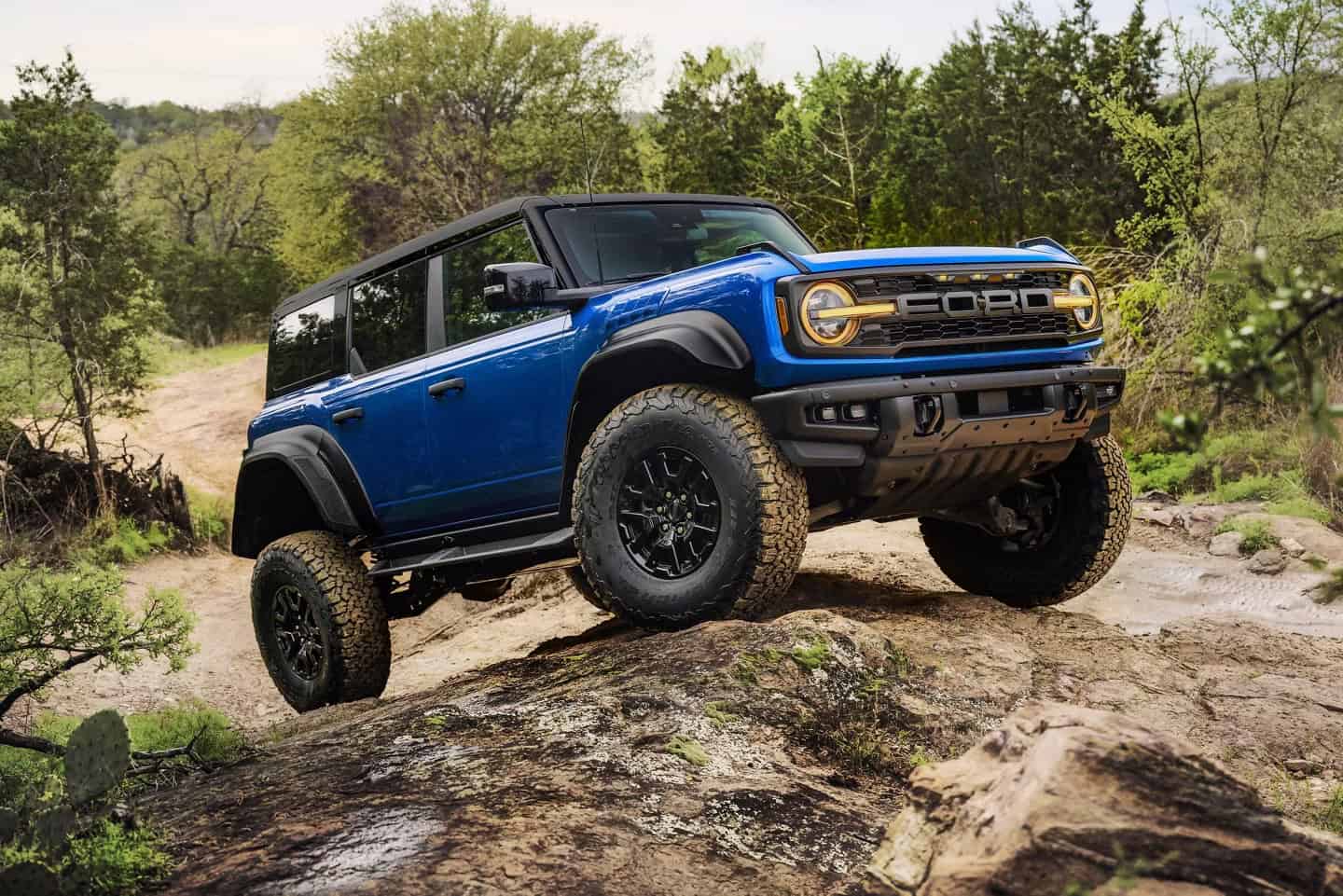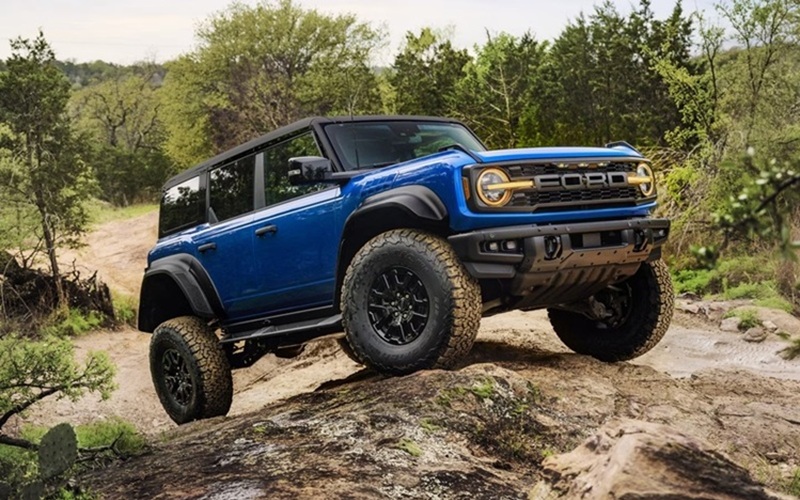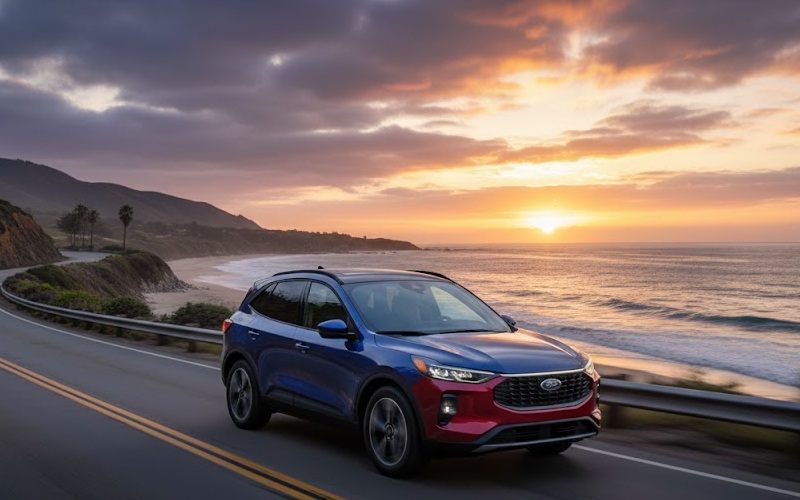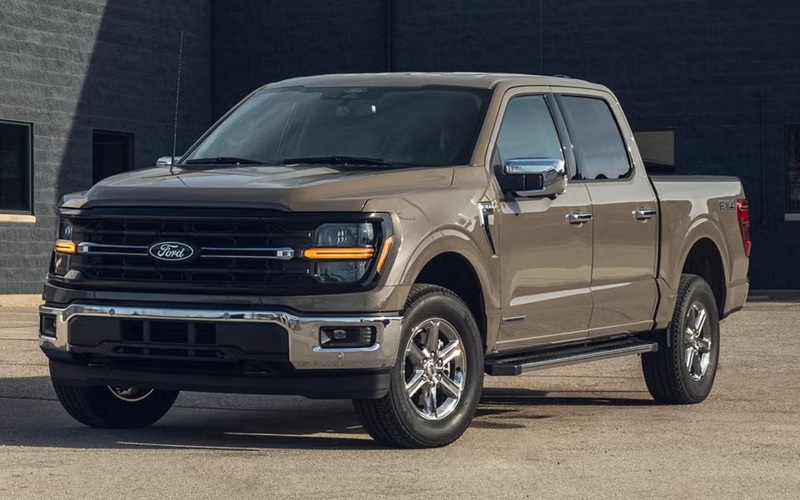The Ford Bronco impresses off-road enthusiasts and daily drivers alike with its robust capability, distinctive styling, and versatile configuration options. Available in both two-door and four-door variants, with choices between soft tops and hardtops, and featuring removable doors and roof panels, the newest Bronco iteration delivers an authentic open-air driving experience. This model year introduces exciting additions to the lineup, including the retro-styled Free Wheeling trim that pays homage to Ford heritage with 1970s-inspired multi-colour body stripes.

This article explores the various engine options available for the Bronco, examines performance differences, and provides recommendations for which powertrain might best suit different driving needs and preferences.
Engine Options for the 2025 Ford Bronco
The Standard 2.3-Litre Turbocharged Four-Cylinder
The base engine for the Bronco is a turbocharged and intercooled 2.3-litre inline-four with aluminum block and head construction. This powerplant generates a respectable 300 horsepower at 5,700 rpm and delivers 325 lb-ft (441 Nm) of torque at a relatively low 3,400 rpm. The direct fuel injection system optimizes combustion efficiency, helping to balance performance with reasonable fuel economy.
Technical specifications for this engine include:
- Engine type: Turbocharged and intercooled DOHC 16-valve inline-4
- Construction: Aluminum block and head
- Fuel delivery: Direct injection
- Displacement: 2,264 cm³
- Maximum power: 300 hp @ 5,700 rpm
- Maximum torque: 441 Nm @ 3,400 rpm
This engine offers an excellent balance of power, fuel efficiency, and reliability for most Bronco owners. It comes standard across most trim levels and provides more than adequate performance for both on-road driving and moderate off-road adventures.
The Optional 2.7-Litre Twin-Turbocharged V6
For drivers seeking additional power, Ford offers a twin-turbocharged 2.7-litre V6 engine. This more potent option produces 330 horsepower at 5,250 rpm and an impressive 415 lb-ft (563 Nm) of torque at just 3,100 rpm. The engine features iron-and-aluminum block construction with aluminum heads.
Technical specifications include:
- Engine type: Twin-turbocharged and intercooled DOHC 24-valve V-6
- Construction: Iron-and-aluminum block and aluminum heads
- Fuel delivery: Direct injection
- Displacement: 2,694 cm³
- Maximum power: 330 hp @ 5,250 rpm
- Maximum torque: 563 Nm @ 3,100 rpm
This powerplant delivers noticeably quicker acceleration and improved towing capability, making it well-suited for owners who prioritize performance or frequently tackle challenging terrain.
The High-Output Twin-Turbo V6
Though reviewed separately by most publications, the Bronco Raptor deserves mention for its high-output version of the twin-turbocharged V6 engine. This specialized variant produces a substantial 418 horsepower, significantly increasing over the standard V6 offering. The Raptor model is designed specifically for high-performance off-road use and comes with numerous additional upgrades beyond just the more powerful engine.
Transmission Options
The Ford Bronco offers two transmission choices, though availability depends on which engine you select:
10-Speed Automatic Transmission
The Ford 10-speed automatic transmission has both engine options and comes standard with the 2.7-litre V6. This transmission provides smooth shifting and helps optimize fuel economy while ensuring the engine stays in its power band. The wide ratio spread allows for strong low-end acceleration while maintaining reasonable highway cruising efficiency.
7-Speed Manual Transmission
For driving enthusiasts who prefer more engagement, Ford offers a 7-speed manual transmission, but only with the 2.3-litre four-cylinder engine. This transmission features six conventional forward gears plus an additional ultra-low crawler gear (essentially a crawl ratio) designed specifically for extreme off-road situations where precise, controlled power delivery is essential.
The manual transmission option demonstrates the Ford commitment to the enthusiast market and provides a more connected driving experience that many off-road purists prefer.
Performance Differences Between Engine Options
Acceleration and Power Delivery
Testing has revealed significant performance differences between the two engine options. The twin-turbocharged V6 delivers noticeably quicker acceleration times. When equipped with the 2.7-litre V6 and 10-speed automatic, a Bronco Wildtrak model achieved a 0-100 km/h time of approximately a zippy 6.2 seconds. By comparison, a Bronco Everglades equipped with the 2.3-litre turbo four-cylinder and automatic transmission needed about 7.1 seconds to reach the same speed.
The V6 also demonstrates superior passing power, with faster 50-70 km/h and 80-110 km/h acceleration times, making highway merging and overtaking maneuvers more confidence-inspiring.
While the four-cylinder still provides adequate performance for most driving scenarios, the V6’s additional 30 horsepower and 90 Nm of torque are immediately noticeable, especially when carrying heavy loads or traversing challenging terrain.
Towing Capacity
All Bronco models offer a maximum towing capacity of 1,588 kg (3,500 pounds), regardless of which engine is selected. This capacity matches the towing rating of the Jeep Wrangler, its primary competitor. However, while both engines can handle the same maximum load, the V6’s additional torque makes towing feel less strenuous, particularly on inclines or when towing at the upper end of the capacity spectrum.
Fuel Economy
The 2.3-litre four-cylinder engine offers better fuel efficiency than the more powerful V6. When equipped with the automatic transmission, the four-cylinder achieves approximately 11.8 L/100 km in city driving and 10.7 L/100 km on the highway.
By contrast, the V6 engine, especially when paired with the Sasquatch off-road package (which includes 35-inch tires), increases fuel consumption to about 13.8 L/100 km for city and highway driving. In real-world testing, four-cylinder Broncos typically achieve around 10.7 L/100 km, while V6 models average closer to 13.1 L/100 km.
Trim Levels and Engine Availability
The Bronco is offered in multiple trim levels, each catering to different priorities and use cases. The trim lineup includes:
- Base
- Big Bend
- Free Wheeling
- Black Diamond
- Outer Banks
- Heritage Edition
- Badlands
- Stroppe Edition
The 2.3-litre four-cylinder comes standard across most trim levels, while the 2.7-litre V6 is optional on most trims and standard on higher-end versions. The Bronco Raptor gets its exclusive high-output V6 engine.
Ford has introduced a retro-styled Free Wheeling trim based on the entry-level Big Bend model, featuring distinctive 1970s-inspired multi-colour stripes on the body. This trim is compatible with the Sasquatch off-roading package, which includes high-clearance fender flares, raised suspension, mud-terrain tires, and upgraded Bilstein shock absorbers.
At the top of the range, the limited Stroppe Edition Bronco features a tri-colour livery inspired by the Stroppe Baja racers of the 1960s and 1970s, offering distinctive styling and enhanced capability.
Off-Road Capability
All Bronco models come standard with four-wheel drive systems that must be manually engaged. The vehicle features an independent front suspension design that provides better on-road manners than the solid front axle used by some competitors like the Jeep Wrangler.
Available off-road equipment includes:
- 35-inch mud-terrain tires
- Bead lock-capable wheels
- Electronic locking front and rear differentials
- Sway-bar-disconnect feature for improved articulation
- G.O.A.T. (Goes Over Any Type of Terrain) drive modes
These features enhance the capability across varied terrains, from mud and sand to rock crawling and trail running.
When to Choose Each Engine Option
Recommended Use Cases for the 2.3-Litre Four-Cylinder
The 2.3-litre turbocharged four-cylinder engine is for:
- Daily drivers who use their Bronco primarily for commuting and weekend adventures
- Fuel economy-conscious buyers who want to maximize range between fill-ups
- Manual transmission enthusiasts who value driver engagement (since the manual is only available with this engine)
- Budget-conscious buyers looking to keep the initial purchase cost lower
- Light to moderate off-roaders who don’t need the additional power of the V6
This engine provides a good balance of performance, efficiency, and capability for most users. Its 300 horsepower is more than adequate for typical driving scenarios and moderate off-road use.
Recommended Use Cases for the 2.7-Litre V6
The 2.7-litre twin-turbocharged V6 engine is better suited for:
- Performance enthusiasts who value quicker acceleration and more responsive power delivery
- Frequent towers who regularly approach the 1,588 kg towing capacity
- Serious off-roaders who tackle challenging terrain where additional torque is beneficial
- Altitude adventurers who frequently drive in mountainous regions where naturally aspirated engines lose power
- Drivers carrying heavy loads of passengers and gear regularly
The V6 engine’s additional 30 horsepower and 122 Nm of torque translate to a more confident driving experience, particularly in demanding conditions. The performance difference is most noticeable during highway passing maneuvers and when crawling over obstacles off-road.
On-Road Refinement and Handling
Despite its rugged off-road capabilities, the Bronco demonstrates surprisingly composed on-road manners. Its steering precision exceeds that of primary competitors, and overall handling characteristics are pretty good for a vehicle designed primarily for off-road use.
When equipped with the largest tires and softest off-road suspension setups, there is noticeable brake dive during hard stops, and the body-on-frame construction is evident in certain driving situations. However, the Bronco strikes an admirable balance between on-road comfort and off-road capability.
Interior Features and Technology
The Bronco offers a range of interior amenities depending on trim level. Base models are relatively spartan, while mid-range trims like Black Diamond and Outer Banks provide additional comfort and convenience features.
Interior highlights include:
- Customizable digital instrument display
- Available infotainment system with navigation
- Rubberized flooring with drain plugs (on select trims)
- Washable interior on certain models
- Off-road focused features like trail mapping
- Available premium audio systems
The interior design balances ruggedness with modern technology, allowing owners to enjoy creature comforts without compromising the vehicle’s adventurous spirit.
Choose The Right 2025 Ford Bronco For You
The Ford Bronco continues to build on the Ford legacy of capable off-road vehicles while incorporating modern technology, improved on-road dynamics, and distinctive styling. With two strong engine options and numerous trim levels to choose from, there’s likely a Bronco configuration suited to almost any buyer’s needs.
For most users, the standard 2.3-litre turbocharged four-cylinder engine provides more than adequate performance and better fuel economy. Those seeking additional performance or regularly tackling more challenging terrain will appreciate the twin-turbocharged V6’s additional power and torque.
Regardless of engine choice, the Bronco delivers on its promise of adventure-ready capability wrapped in a design that pays homage to its heritage while embracing modern engineering advancements. Its combination of on-road refinement and off-road prowess makes it a compelling option for enthusiasts and casual drivers alike.



